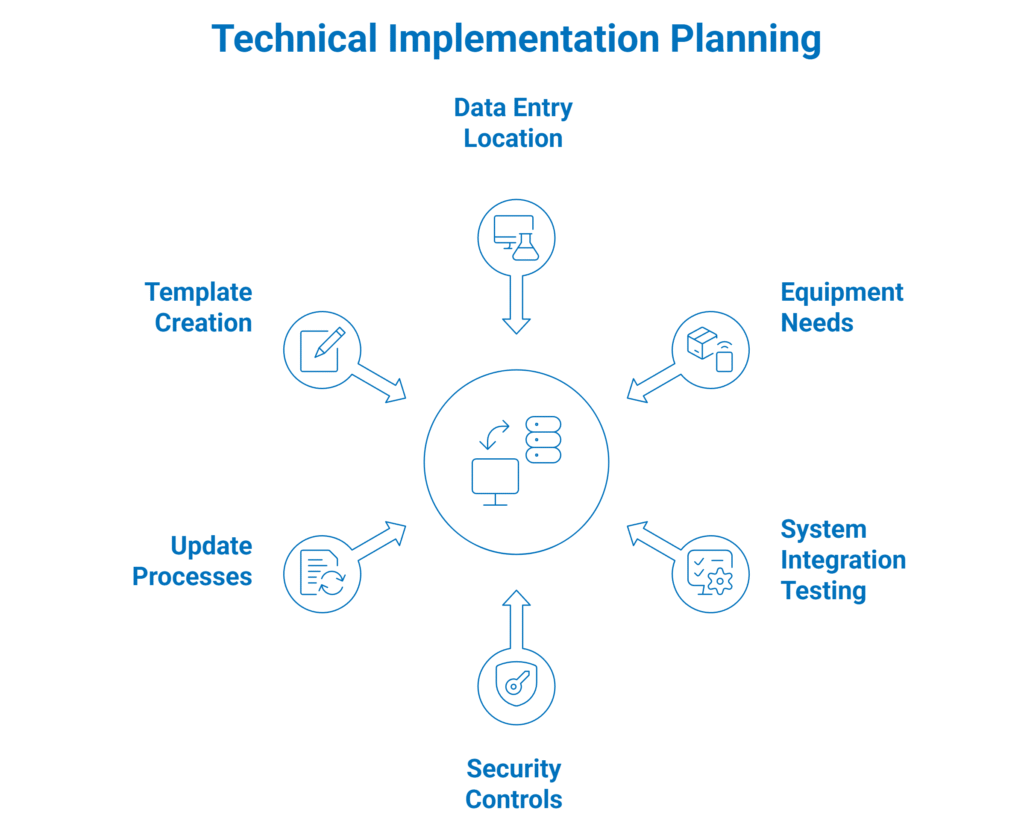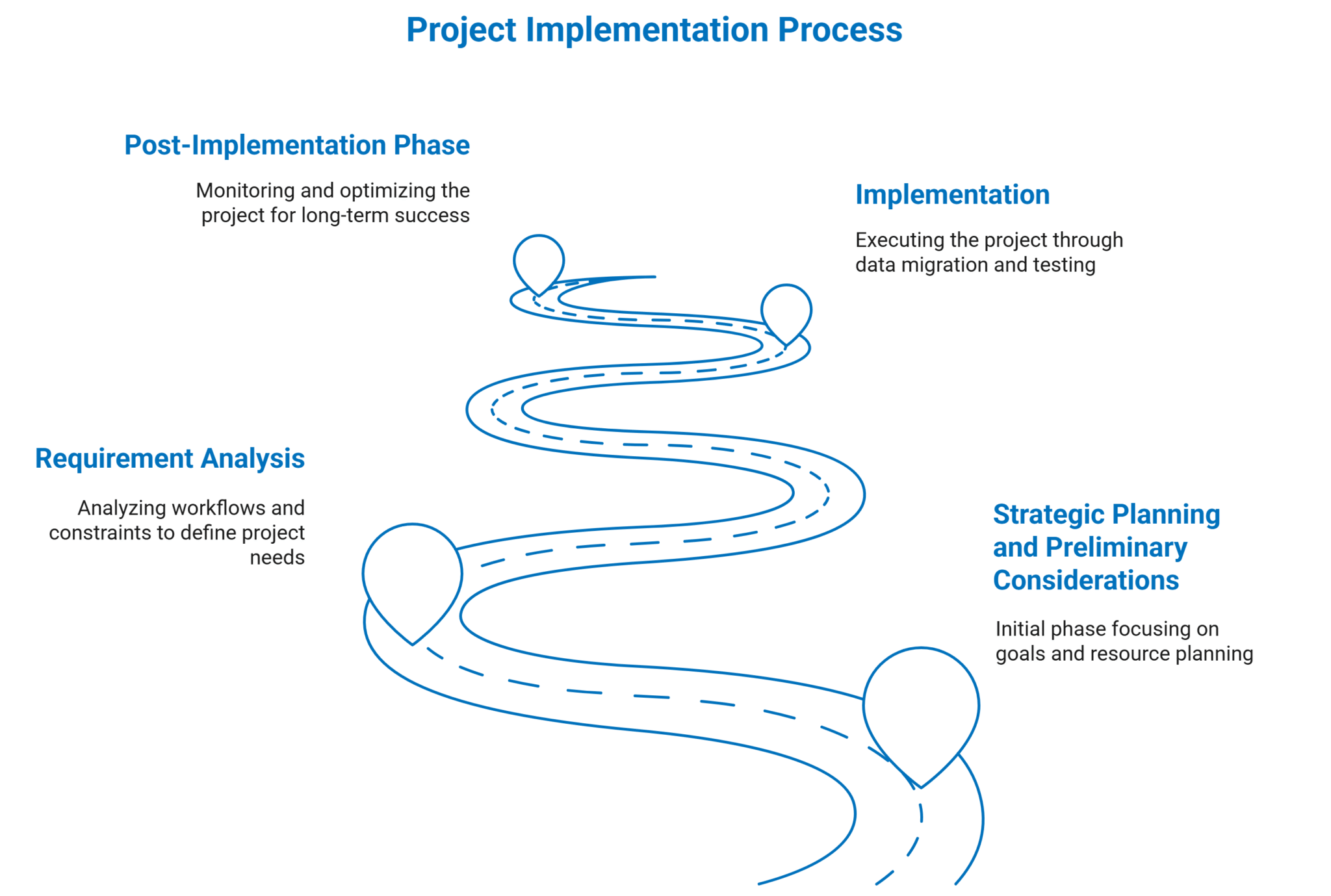Challenges and Considerations in an ELN Evaluation and Implementation - Part 2
Written by Patrick Furer
An Electronic Laboratory Notebook (ELN) implementation requires careful planning across multiple dimensions including strategic alignment, technical integration, and human factors. Success depends on thorough requirement analysis, appropriate team composition, effective change management (technical & organizational), and a well-structured implementation approach. Organizations must balance standardization with user experience while ensuring data integrity throughout the migration process.
Implementing or migrating an ELN is a complex undertaking that demands significant resources and expertise across multiple disciplines. Therefore, it is advisable to consider whether engaging the support of ELN experts may be beneficial.

Implementation
Data Migration
Data migration is often one of the most challenging aspects of ELN implementation and requires careful planning. For this reason, it is advisable to:
- Decide whether, how and to what level of detail legacy data should be prepared, processed and migrated
- Plan for data standardization and normalization before migration
- Ensure data consistency and integrity throughout the migration process
- Develop comprehensive data mapping and validation processes
- Consider an iterative, agile approach rather than a linear "waterfall" method for complex migrations
Pilot Projects and Testing
A common technique is to use one or more sandboxes to test different aspects of the new system and the workflows to be implemented. Thorough testing in realistic conditions helps identify issues before full-scale implementation. Consequently, it is suggested to:
- Conduct pilot tests before full implementation to identify potential issues
- Select a diverse team for pilot testing that represents different roles and departments
- Perform usability tests under realistic conditions, possibly in parallel with existing systems
- Test with actual data volumes to ensure system performance under real conditions
- See the potential to improve, streamline and harmonize current workflows - seize the opportunity!
- However, do not sacrifice end-user usability and comfort for the sake of standardization
- Identify gaps and bottlenecks and allow people to „dream“ a perfect set-up.
- Collect detailed feedback from all pilot participants to get a representative picture and achieve wider acceptance
Technical Implementation
The technical aspects of implementation require careful planning and execution. Thus, it is recommended to:
- Consider where (physically) data entry will occur in the laboratory workflow
- Determine whether additional equipment (tablets, barcode scanners, etc.) will be necessary
- Conduct thorough system integration testing
- Implement appropriate security controls, including encryption and access management
- Establish clear processes for handling system updates and modifications
- Start creating templates and dictionaries to make it easier for users to get started in the future

Training
User adoption is critical to the success of an ELN implementation. Training and focusing on user experience increases acceptance. Consequently, it is prudent to:
- Estimate training requirements based on staff's prior knowledge and technical proficiency
- Offer thorough training and clearly communicate the system's benefits to users
- Consider appointing "champions" within each department who can support other users
- Implement a 'train the trainer' approach so your key staff members can effectively pass on their knowledge to the rest of the team
- Learning by doing is often the key to success. If possible, provide user access to a sandbox system and support a self-directed familiarization process in addition to training.
Post-Implementation Phase
Monitoring and Optimization
After implementation, continuous monitoring helps identifying opportunities for optimization. This typically includes:
- Monitor system performance and user satisfaction
- Identify and implement improvement opportunities
- Regularly review whether the system continues to meet requirements
- Gather feedback from different user groups to guide future enhancements
- Track adoption rates and address areas of low utilization
Please note that continuous improvement is an important key aspect. However, not every single improvement idea is worth implementing. It is therefore recommended to introduce a prioritization process that takes cost-benefit considerations into account.
Maintenance and Support
Ongoing support ensures the ELN continues to deliver value over time. This typically covers the following aspects:
- Establish support structures for users
- Define update and maintenance processes
- Define the types of support available, such as champions and the IT ticketing system, and specify who is authorized to contact the vendor’s service desk
- Ensure continuous training for new employees
- Plan for system scalability as your organization grows
- Maintain documentation of configurations and customizations
- Organize a super-user community with periodic meetings
- Define a change management process for configuration changes or metadata curation
Conclusion
Implementing an ELN is a complex undertaking that requires careful consideration of technical, organizational, and human factors. By systematically addressing the challenges outlined in this guide, organizations can increase their chances of a successful ELN implementation.
The key to success lies in thorough preparation, appropriate team composition, realistic resource planning, and effective change management. Remember that ELN implementation is not merely a technical project but a transformation of how laboratory work is documented, shared, and utilized throughout the organization. Consider whether engaging the support of a consulting company might be a beneficial option.
By balancing standardization with user experience, ensuring proper data migration (where required), and maintaining focus on the organization's specific goals, an ELN implementation can deliver significant benefits in efficiency, compliance, knowledge management, data quality and collaboration.

